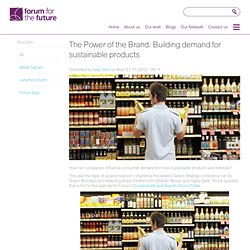

Welcome to Forbes. Bullitt Center launches campaign to spread the message of biomimicry. Image: Bullitt Center In many ways, a city is believed to be the exact opposite of nature.
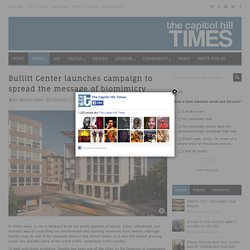
Cities, oftentimes, are humans’ way of controlling our environment and isolating ourselves from nature. Although Seattle may be one of the greenest cities in the United States, it is also the fastest growing major city and has some of the worst traffic congestion in the country. Ultra-rich man's letter: "To My Fellow Filthy Rich Americans: The Pitchforks Are Coming" Global Food Outlook Map: How Tech is Remaking the Future of Food. Guest post by Sarah Smith, Research+Design Manager, Institute for the Future.
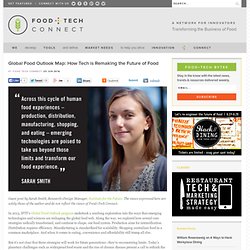
The views expressed here are solely those of the author and do not reflect the views of Food+Tech Connect. In 2013, IFTF’s Global Food Outlook program undertook a yearlong exploration into the ways that emerging technologies and sciences are reshaping the global food web. Along the way, we explored how several core strategies radically transformed, and continue to shape, our food system. Production aims for intensification. Distribution requires efficiency. We need an apartheid-style boycott to save the planet. Architecture 2030: Hot Topics. The 2030 Palette The principles and actions needed to create low-carbon and resilient built environments worldwide - now live!.

Explore the 2030 Palette here.. 2030 Districts 2030 Districts are unique private/public partnerships bringing property owners and managers together with local governments, businesses, and community stakeholders to provide a business model for urban sustainability. AIA+2030 Professional Series The AIA + 2030 professional education series is the result of a partnership between the American Institute of Architects Seattle, Architecture 2030, BetterBricks, and the City of Seattle. Ed Mazria at Greenbuild 2013. In the future we could use plants to mine the Earth for us. Why The New American Workforce Wants Better Consumption, Not Just More. America is on strike.
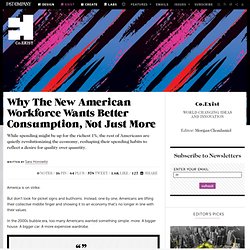
But don’t look for picket signs and bullhorns. We are way off target if we hope to feed everyone by 2050. Norman Borlaug, a hero of feeding the less fortunate, estimated that if all the world's available farm-space was converted to organic crops, there'd only be enough food to feed four billion people.
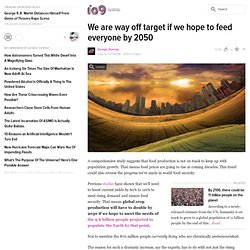
Coca-Cola Launches "Natural, Healthy" Coca-Cola Life Soda. Coca-Cola has launched a new “natural” and “healthy” soda line called Coca-Cola Life.
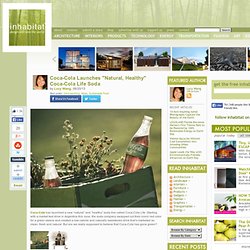
Starting with a market test drive in Argentina this June, the soda company swapped out their iconic red color for a green sleeve and created a low-calorie and naturally sweetened drink that’s marketed as clean, fresh and natural. But are we really supposed to believe that Coca-Cola has gone green? In an effort to follow consumer demand for environmentally friendly products, Coca-Cola Life was created as a natural and healthier alternative to regular Coke, with a 60% reduction in calories. The key to Coca-Cola Life is the formula’s new blend of sugar and the no-calorie natural sweetener stevia, which is extracted from plants native to South America. And according to NPR’s Bob Mondello, even with the substantial caloric reduction, Coca-Cola Life tastes almost the same, if not a bit sweeter than regular Coke. But is Coca-Cola Life truly a sustainable product?
Via Treehugger. None of the world’s top industries would be profitable if they paid for the natural capital they use. The notion of “externalities” has become familiar in environmental circles.

It refers to costs imposed by businesses that are not paid for by those businesses. For instance, industrial processes can put pollutants in the air that increase public health costs, but the public, not the polluting businesses, picks up the tab. Could this incredible engineering project save the polar ice caps? LaserOrigami Uses a Laser Cutter to Create 3D Objects Faster than 3D Printers.
It’s widely assumed that 3D printing represents the next frontier in fabricating objects of all types, but researchers at Germany’s Hasso Plattner Institute have come up with a novel way of creating 3D objects out of 2D pieces of plastic using a laser cutter.

LaserOrigami is a remarkable new fabrication technique that is faster than most 3D printers. Instead of using joints, LaserOrigami can create complex 3D objects by folding, bending and stretching plastic with extreme precision, eliminating the need for pieces to be manually assembled. To create a 3D object, LaserOrigami makes precise cuts in some places, and in others it uses defocused lasers to heat up certain parts of the plastic until they become pliable, bending under the force of gravity. Soma Unveils World's First Completely Compostable Water Filter. Water filtration company Soma recently unveiled the world’s first entirely compostable water filter.
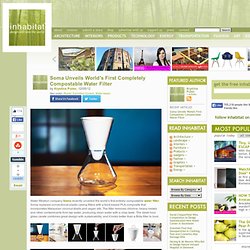
Soma replaced conventional plastic casing filters with a food-based PLA composite that incorporates Malaysian coconut shells and vegan silk. The filter removes chlorine, heavy metals and other contaminants from tap water, producing clean water with a crisp taste. The sleek hour glass carafe combines great design with sustainability, and it looks better than a Brita filter to boot. Most traditional water filters are made mostly of plastic with a carbon filter. The Power of the Brand: Building demand for sustainable products. How can companies influence consumer demand for more sustainable products and services?
